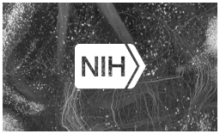
If you are developing or using a new neural device in humans, ready to register your device for clinical trials, or thinking about bringing your device to market, learn more about how to get feedback from the FDA on your device and clinical testing plans before starting the regulatory approval process.
Translating neural devices from animals to humans is key to the BRAIN Initiative’s goal of developing new technologies to better understand the human brain. Initial feasibility studies, clinical trials, and device marketing are all stages of device development that may require some regulatory engagement.
The resources below can benefit BRAIN Initiative applicants, investigators, or anyone seeking guidance on neural device regulations, including those using novel technologies or “first-of-a-kind” devices and participants in the BRAIN Initiative Public-Private Partnership Program (BRAIN PPP), which facilitates collaborative clinical studies between investigators and manufacturers of novel Class III (invasive, risky) neural devices.
The Food and Drug Administration (FDA) can help you navigate potential and planned neural device submissions! The Q-Submission (Q-Sub) program is an excellent (and often underutilized) system that allows applicants to request pro-bono, formal FDA feedback on device applications. Q-Subs can be used to prepare for several medical device submission types, including Premarket Notifications (510(k)), De Novo requests, Investigational Device Exemptions (IDE), Premarket Approvals (PMA), and Humanitarian Device Exemptions (HDE), and many more.
There are a few ways to request feedback, each of which serves a different purpose:
- Pre-Submissions (Pre-Subs) allow you to request feedback on future device or marketing submissions. Typically, Pre-Subs can help you develop a device, foresee research hurdles, create protocols, and plan premarket applications.
- Submission Issue Requests (SIR) are a way to discuss review issues raised in IDEs or hold letters. SIRs can help you quickly address issues and move your project forward.
- Study Risk Determinations can help you determine whether your device poses significant risk to patients or if it is exempt from IDE regulations.
Details about each request type and the Q-Sub process can be found in the FDA’s guidance document Requests for Feedback and Meetings for Medical Device Submissions: The Q-Submission Program.
Applicant participation in the program is voluntary and the feedback format varies by Q-Sub type. Generally, you can request an in-person meeting, teleconference, or written response. The FDA Center for Devices and Radiological Health also recently published a review paper in Neuromodulation, where FDA staff overview device regulation, discuss therapeutic neurostimulation devices, and offer tips on how to best engage the FDA.
Looking for more regulatory resources? The FDA provides guidance documents (and a user-friendly search engine) on all types of regulatory submissions, including IDEs for early feasibility and first-in-human studies, and more. The Brain Initiative Alliance website also lists resources under the “FDA Documents” tab here.
Other BRAIN PPP resources not related to FDA approvals, including information on disclosures and agreements between academic institutions and device manufacturers, can be found on the NIH BRAIN Initiative website here.
